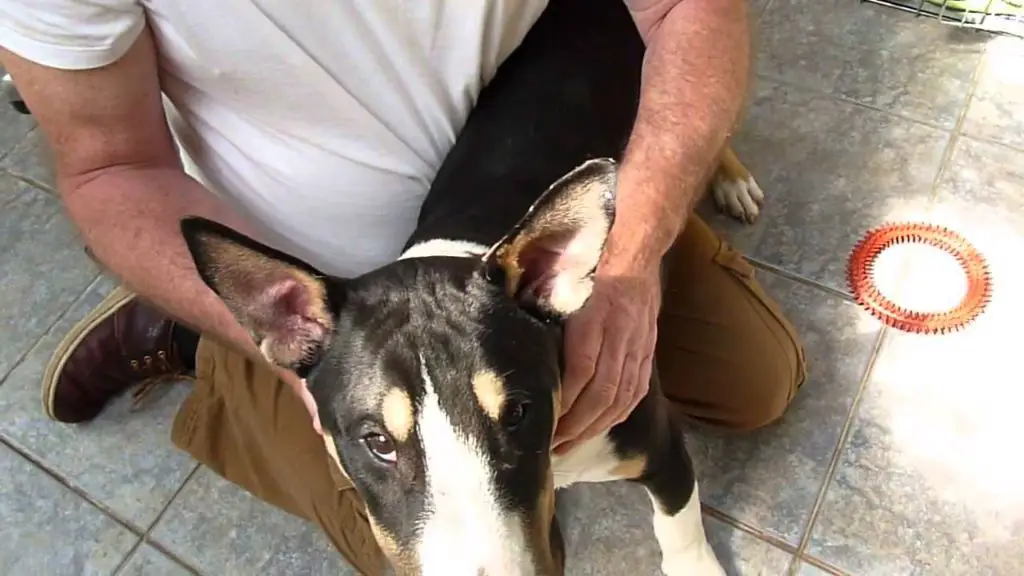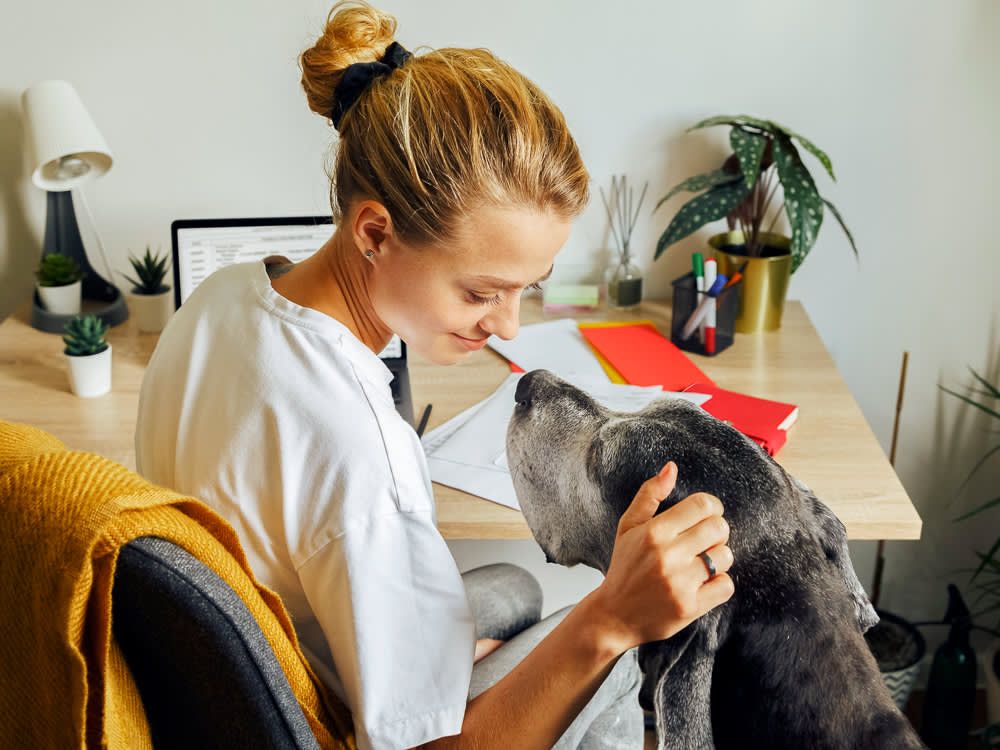Introduction
The ears of puppies go through a transition period from floppy, folded over ears to fully erect ears that stand tall. Whether a dog’s ears stand up naturally or remain floppy depends largely on their breed. Some dogs are born with naturally erect ears, while others develop upright ears as they grow. Certain factors like teething, nutrition, exercise, and taping can influence whether a puppy’s ears stand. With time and patience, most puppies that are meant to have upright ears will develop them, but it’s also important to identify any underlying health issues if ears remain floppy.
Ear Development in Puppies
Puppies are born with floppy ears that progressively become erect over the first few weeks of life. According to The Spruce Pets, a puppy’s ears begin to open around the same time as their eyes, generally around 12 to 14 days old. Their hearing continues to develop until about 8 weeks of age.
As per Hill’s Pet Nutrition, the timeline of ear development in puppy growth stages is:

- 0-2 weeks: Ears are closed, puppies cannot hear
- 2-3 weeks: Ears begin to open, hearing starts developing
- 3-4 weeks: Ears stand up when alert, hearing improves
- 4-8 weeks: Ears stand fully erect, hearing matures
The time it takes for a puppy’s ears to stand completely upright depends on the breed, with some achieving full ear carriage faster than others. But generally, erect ears are fully developed by 8-12 weeks of age.
Factors That Influence Ear Standing
One of the biggest factors influencing whether a puppy’s ears stand up or not is its breed. Certain breeds are known for having ears that stand erect, while other breeds typically have floppy ears that never stand. According to DogCrunch, some examples of dog breeds that commonly have standing ears include:

- German Shepherds
- Akitas
- Alaskan Malamutes
- Siberian Huskies
- Australian Cattle Dogs
- French Bulldogs
These breeds are genetically predisposed to having standing ears due to the shape and cartilage strength of their ear leather. The ear leather refers to the part of the pinna or external ear that is made of skin. In dogs with weak ear cartilage and heavy ear leather, the ears are more likely to be floppy even when fully grown.
Ear Development in Puppies
A puppy’s ears go through several stages of development. At birth, all puppies have floppy ears. The cartilage in the ear has not yet developed to allow the ear to stand up. According to research, the genetics of the parents determine if a puppy’s ears will eventually stand or remain floppy as an adult dog. There are two main genes that influence ear type:
The dominant gene for prick ears causes the ears to stand upright. The recessive gene for drop ears results in floppy ears. When a puppy inherits one copy of the dominant prick ear gene from one parent, its ears will likely stand. If it inherits two copies of the recessive drop ear gene from both parents, the ears will be floppy.
Most puppies’ ears start to stand between 4-7 weeks of age as the ear cartilage develops and strengthens. The muscles in the ears also develop around this time and aid in standing the ears up. Breeds with prick ears usually have ears standing fully erect by 6-8 weeks old.
For some breeds like German Shepherds, it can take 4-6 months for ears to fully stand. The large heavy ears require more cartilage and muscle development over time. In some cases, ears may not stand until a dog reaches full maturity at 1-2 years old (https://www.quora.com/Is-the-gene-for-upright-ears-recessive-in-dogs-If-I-were-to-cross-a-dog-breed-with-floppy-ears-with-one-with-upright-ears-what-gene-will-be-dominant).
Ear Development in Puppies
A puppy’s ears go through several stages as they develop and grow. At birth, most puppies have floppy ears. Around 3-5 weeks of age, as the cartilage begins to strengthen, the ears will often lift up temporarily into a triangle shape. However, they usually flop back down when the puppy teeths and enters the teething phase at around 12-16 weeks old.
During teething, the cartilage in the ears softens as calcium is redirected to the teeth. This can cause the ears to remain floppy until the teething phase completes. Once teething finishes, the cartilage re-hardens and the ears will stand erect. This occurs naturally in most breeds with prick ears between 4-7 months old. If the ears stood previously before teething, they will likely stand again on their own after teething finishes
(source).
Nutrition plays an important role in ear development. Ensuring the puppy receives adequate calcium, along with vitamins and minerals like zinc, copper, and manganese, supports cartilage growth and hardness. Some breeders recommend supplements like Solid Gold Seameal during teething to provide essential fatty acids for ear cartilage strength
(source). A balanced puppy diet or supplement under veterinary guidance can aid proper ear development.
Tips for Helping Ears Stand
One of the most common techniques for helping a puppy’s ears stand is taping or gluing. This involves gently taping the ears in an upright, erect position to train the cartilage to stand. According to a guide on Pinterest, it’s important to start taping as soon as the puppy’s ears start to drop, usually around 3-5 weeks old.

To tape the ears, cut strips of adhesive tape or surgical tape about 1-2 inches wide. Make sure the tape is not too sticky or tight. Then gently smooth the tape from the tip of the ear down to the head, holding the ear upright as you tape. It may take several weeks of taping for the ears to stand permanently. The taping should be changed regularly to avoid irritation.
Another option is to use surgical glue instead of tape. This involves putting a dab of glue on the inside tips of the ears to hold them upright. The glue will wear off on its own after several days. As with taping, this may need to be repeated regularly until the ears strengthen.
It’s important not to tape or glue too tightly or for too long. Puppies still need to move their ears naturally as part of development. Taping should be discontinued by 12-16 weeks at the latest.
While taping or gluing can help ears stand, patience is also needed. For some puppies, the ears may strengthen on their own with age. But following the proper taping techniques can assist the process.
(Source: https://www.pinterest.com/pin/160159330468906948/)
Tips for Helping Ears Stand
If your puppy’s ears are floppy, there are some things you can do to help encourage them to stand up on their own:
Providing chews. Chewing helps strengthen the muscles in a puppy’s ears and jaw. Give them cow ears, bully sticks, raw bones, or other hard, tough chews. Avoid cooked bones, which can splinter. Supervise chewing to prevent choking.
Rotate different chews to keep your puppy interested. Let them chew for 10-15 minutes a few times per day. Massaging and gently tugging their ears while they chew can also help work those muscles.
Ear Development in Puppies
A puppy’s ears go through several stages of development in the first months of life. At birth, most puppies have floppy ears that fold over. This is because the cartilage in the ears has not yet hardened and gained its strength. Over time, as the cartilage develops, the ears will gradually stand up and take their final form.
The timing of ear development depends on the breed. For breeds with erect ears, like German Shepherds, the ears often start standing between 4-7 weeks of age. However, it can take up to 6 months for the ears to fully stand in some puppies (1).
There are a few things owners can do to help encourage proper ear development:
- Massaging the ears and base – Gentle rubbing and massaging of the ears is thought to help increase blood flow and strengthen the cartilage. Massage for 1-2 minutes daily focusing on the base and folds of the ear (2).
- Providing proper nutrition – A diet with adequate protein, fatty acids, and minerals supports ear cartilage growth.
- Avoiding trauma to the ears – Preventing damage to the delicate ears as they develop.
While techniques like ear massages may help, genetics play the biggest role. Some puppies may need support from taping methods if the ears don’t stand on their own.
When to Worry
In most cases, a puppy’s ears will stand up on their own by the time they are 6 months old. However, if your puppy is over 6 months old and their ears are still floppy, it’s a good idea to consult your veterinarian.

Some things that may indicate an underlying issue preventing the ears from standing include:
- Ears that are still completely floppy and show no signs of starting to stand by 5-6 months of age (according to “Why Are My Dog’s Ears Not Standing Up?” on PetHelpful)
- Only one ear standing up by 6 months, while the other remains floppy (“Will my 5-month-old puppy’s second ear stand up now? …” on Quora)
- Ears that seem weak, fold easily, or have trouble holding themselves up (according to PawSafe)
If you notice any of these signs, schedule a veterinarian visit to rule out potential health issues like ear infections, parasites, poor nutrition, or cartilage abnormalities that could be preventing proper ear development. The sooner ear troubles are addressed, the better the chances of getting those ears to stand tall.
Conclusion
For most puppies, the process of ear standing happens naturally between 4-7 months of age as cartilage develops and strengthens. While floppy ears can be cute, owners of breeds with traditionally erect ears are often eager for them to stand. Patience is key, as the ears will usually stand on their own during teething as long as they are healthy. Some tips like gentle encouraging massage or taping can be tried, but avoid being too aggressive. If ears remain floppy past 7 months, consult with your veterinarian to see if there are any underlying health issues impeding normal ear development.
In summary, ear standing in puppies is a natural process that occurs as cartilage matures during the teething phase. Some breeds are prone to tipped or floppy ears, but for others, a little time and TLC can help encourage those adorable ears to stand tall.
